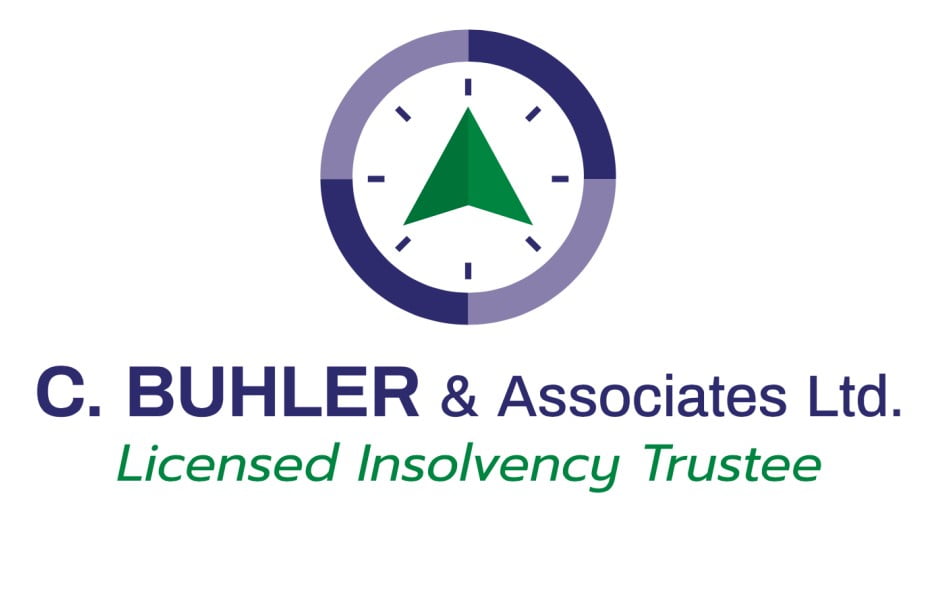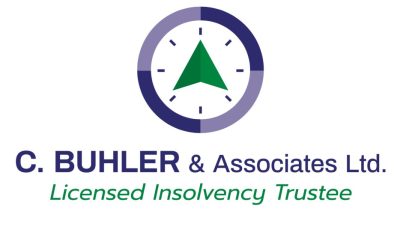
Introduction and Background
Can you provide a brief overview of your experience as an insolvency trustee?
Originally from Brandon, Manitoba, Crystal Buhler graduated with a Diploma in Business Administration from Assiniboine Community College, followed by a Bachelor of Accounting Science from the University of Calgary. A year later, after receiving her designation as a Certified General Accountant (now Chartered Professional Accountant), Crystal entered the Insolvency industry, and in 2011, became a Chartered Insolvency and Restructuring Professional (CIRP) and Licensed Insolvency Trustee (LIT).
With over 10 years of experience in insolvency, working with both a national firm and a boutique insolvency firm, Crystal started C. Buhler & Associates Ltd., a Professional Licensed Insolvency Trustee firm in 2018. Operating under the name Debtfreenorth.com, Crystal and her team have expanded to 5 offices, serving all 3 Prairie Provinces and all 3 northern Territories, from their home base of Brandon, Manitoba, with a focus on helping those who live and work in Canada’s remote and rural communities.
How long have you been practicing as an insolvency trustee, and what motivated you to specialize in this area?
I’ve worked in the insolvency industry since 2004, received my Chartered Insolvency Restructuring Professional (CIRP) designation in 2011, and I was licensed as an LIT later in 2011.
Have you handled any high-profile insolvency cases that you can discuss?
While all bankruptcy cases are a matter of public record, since most of our files are personal or small corporate files, our files generally aren’t ones you’ll read about in the newspaper. That said, we have had some cases of significance in terms of insolvency law, which have been reported in CanLII and on the Manitoba Courts Website.
Understanding Debt Relief Options
What are the initial steps someone should take when they realize they are overwhelmed by debt?
Reach out to us by calling us, texting us, or using our website to find our nearest location for a scheduled appointment. We actively cultivate a judgement-free environment and do everything possible to make each and every person who walks through our doors feel valued and welcomed. That being said, setting up your first meeting with a licensed insolvency trustee is a major and courageous step toward financial freedom, but for some clients, it can also be accompanied by feelings of apprehension or anxiety.
Can you explain the differences between various debt relief options such as debt consolidation, consumer proposals, and bankruptcy?
Debt consolidation is another word for a loan from a financial institution, which is intended to cover multiple debts, reducing what is sometimes an overwhelming number of different payments into just one payment. Debt consolidation can be a good idea to reduce the interest rate you are paying and reduce your monthly payments and can be a good option when you are looking for debt relief. Debt consolidation companies advertise many different payment programs and interest rates and should be able to provide you with an idea of how much your payments could be reduced if you choose a debt consolidation loan. Good debt consolidation companies will ensure you understand all your options, not just provide you with options they can provide you with. In addition, they will educate you on the products they offer, such as insurance and incentives and options to pay your debt off early. It is generally best to stay away from places that advertise debt consolidation for bad credit, as they generally have an extremely high-interest rate. Often we see that by the time a person realizes they may be in a difficult situation, they may no longer qualify for a debt consolidation loan.
A Consumer Proposal is a legally binding agreement, similar to a contract, managed by a Licensed Insolvency Trustee, that is between the debtor and their creditors. The proposal usually reduces or eliminates interest rates, and commonly reduces the principal owed on the debt as well. The debtor pays an agreed-upon amount to settle all their debts, and the creditors receive periodic payments from the Trustee. Once a proposal is started there is a stay of proceedings in place, so any garnishments that are happening stop and any interest that is accruing stops.
Personal bankruptcy is a somewhat more severe alternative to filing a consumer proposal. When a bankruptcy is filed by an LIT, your assets, subject to certain exemptions, are assigned to the Trustee, who then liquidates your assets. In return, a debtor is protected from their creditors and once the bankruptcy is discharged, their debts, with only certain exceptions, are eliminated. During bankruptcy proceedings, your LIT will take control of your assets, investigate your affairs, and monitor your progress on an ongoing basis.
How does an individual’s choice of debt relief strategy affect their credit score and financial future?
Trustees are often asked what a Bankruptcy or Consumer Proposal will do to a person’s credit score. The reality is that if you are in financial trouble and have missed payments, or are exhibiting the symptoms of financial difficulty, your credit may already be impacted. Unless it is helping you solve your financial problem, your credit score is irrelevant. Said another way—unless you can use it as a tool to help you—your credit score is useless to you. According to Equifax, most types of negative information generally remain on your Equifax credit report for 6 years. This means that something as simple as a late payment, or something as dramatic as a bankruptcy has the potential to show on your report for the same period of time.
We often refer to a bankruptcy or consumer proposal as a ‘line in the sand’ on a person’s credit report. It is the point at which the credit stops accumulating bad points, and starts accumulating good ones. A Bankruptcy or Consumer Proposal will show on your credit for a predetermined period of time, and then it will be removed, together with all the accounts that were included in the process. Essentially, your credit report has been reset. It is then up to you to rebuild your credit, make wise purchasing decisions, and budget your income.
What are some common misconceptions about working with an insolvency trustee that you would like to clarify?
You don’t need a referral to an LIT—our consultations are free and available to anyone who wants to discuss their situation.
Consultations with a Trustee are free—and we don’t make you file bankruptcy—our job is to educate you on all your options, and then you are free to make your own decision.
Bankruptcy Myth #1 – If I file for bankruptcy, I’ll lose my house.
Not always true. Several Canadian provinces have carved out generous exemptions which allow debtors to retain assets, including homes, during a bankruptcy. Having a good idea of what your house is worth, whether that is an opinion from a realtor or a recent appraisal, will help. If you can provide your Licensed Insolvency Trustee with an idea of the value of the home, as well as the amount of mortgage outstanding against it, they will likely be able to advise if a bankruptcy would impact your home. Often, your mortgage is affordable—it’s just the other debts, like credit cards, that aren’t. A bankruptcy might be the perfect solution to reduce your debt to the lowest possible amount, while still being able to retain your assets.
Bankruptcy Myth #2 – If I file for bankruptcy, everyone will know.
While it is true that some bankruptcies need to be advertised in the newspaper, they are few and far between. Most bankruptcies are a summary process, meaning they take place with little if any, public knowledge. The federal government does maintain a database of names for persons who file for bankruptcy, however, they currently charge $8. per search if a member of the public wishes to search the database. The cost alone is enough to deter most searches. It is not mandatory for Trustees to advise any third parties other than your creditors and the Office of the Superintendent of Bankruptcy about your bankruptcy. In fact, aside from any regulatory requirements, Trustees will treat your bankruptcy filing as confidential. Even your employer does not need to find out unless you don’t comply with your bankruptcy duties.
Bankruptcy Myth #3 – If I file for bankruptcy, I’m a failure.
This is possibly the most damaging bankruptcy myth—the myth that one’s worth is somehow tied to one’s financial well-being. Bankruptcies happen for many reasons, most of which are personal to the individuals affected. Bankruptcies can be brought about because of illness, job loss, divorce, family situations, downsizing, industry change, climbing interest rates, and inability to get affordable credit—the list is endless! But ultimately the reason for your bankruptcy is as unique as you are. We understand that financial difficulties can happen to anyone and that financial problems are a major source of stress. Rather than thinking of bankruptcy as a failure, consider it a financial “reset”. Sometimes, bankruptcy makes the most sense, given the situation.
Strategies for Debt Management
How should individuals prioritize their debts (e.g., secured vs. unsecured debt) when planning their repayment strategies?
Everyone’s case is different—this is a question better asked with a specific situation in mind.
How often should someone in debt review and adjust their budget, and what are the key indicators that a change is needed?
It is not uncommon for us to have a conversation about debt with someone, and they choose to continue without a Proposal or bankruptcy, which is completely understandable and can be a good option in some cases. However, we generally suggest that if they have chatted with our team and are choosing not to file something, they set a reminder on their phone for 3 months down the road, to re-visit whether they have made headway in reducing debt on their own. If they haven’t made headway, set another reminder at month 6, and if still no progress—reconsider the options we discussed. Of course, they are always free to call again, as situations change over time. Any time your debt is causing you stress such as health issues, personal problems, or relationship issues—it’s time to speak with a Licensed Insolvency Trustee.
What are the long-term steps to not only get out of debt but also to remain debt-free and start building wealth?
Remember, your credit score is a tool, not a status symbol. Take steps—drastic if necessary—to get out of debt and stay out of debt. Enlist help—tell your friends that you are cutting back financially, and you’ll be amazed at the support they can provide. Last, be sure to create an emergency fund—6 months of living expenses at a minimum, and replenish any amounts you withdraw as soon as possible.
Psychological Aspects of Debt
What are the psychological impacts of debt on individuals, and how can they manage these stresses while working toward financial stability?
This is really hard to measure because everyone has a different tolerance to different stressors in their life. It is very common to meet with people who tell us they are anxious, depressed, and have trouble sleeping, due to their debt. It’s a fact—debt can become overwhelming to the point that it is difficult to function. It is not unheard of for us to meet with people who either are or have been suicidal, as a result of the financial stress they experience—they just can’t see a way forward.
A very common theme we hear from our clients once they have decided to proceed with one of our services is that they feel a giant weight has been lifted off and that they shouldn’t have waited so long to reach out to someone.
Can you share tips on maintaining mental health while dealing with financial stress?
It sounds cliche, but keeping up with one’s personal fitness—going for a walk, volunteering at an animal shelter, playing an instrument, attending a class—these are all either free or low-cost options to keep busy and help you feel good about yourself, at a time that is stressful.
Many of our clients have pets—they are almost apologetic when we first meet, as they realize just how much their animals cost. However, there is a real connection between caring for an animal and being better able to weather financial storms—the cost of these four-legged friends is an important part of any budget. And it helps that our team is full of animal lovers—we all have them—horses, fish, chickens, dogs, and even a rabbit—who have, at one point or another, made their homes with our team members.
Initial Consultation and Process
What can a new client expect during their first consultation with an insolvency trustee?
What To Expect When Meeting With a Licensed Insolvency Trustee:
- To be treated respectfully, and have your options explained in a nonjudgmental manner
- To have all your questions answered and be provided with a contact at the LIT’s office if you have questions after your consultation
- Your consultation with our LIT will be free. If you are asked to pay a referral fee or consultation fee, you are likely not dealing with an LIT.
- To meet with our LIT either in person or virtually (by phone or video) at a pre-arranged time that is convenient for you
A licensed insolvency trustee will need to gain a thorough understanding of your financial situation, your goals, and the terms and conditions you will be comfortable with moving forward. It’s important to come prepared to put everything on the table in order to facilitate the most productive outcome possible.
How do you assess a client’s financial situation to recommend the best course of action?
Many different factors go into determining the debtor’s next best move. In fact, Trustees are highly trained, highly regulated, skilled professionals, able to adapt their advice based on each situation. Generally, a consultation begins with a standard set of questions, but LITs and their skilled staff know exactly which items cause concern, and how best to advise each prospective client.
What documentation should clients bring to their first meeting?
- A list of your debts
- A list of your assets
- A list of your monthly expenses
- A list of any questions you have
Services and Support
What additional services do you offer to help clients manage their financial situations?
Because we are government-regulated, our services are fairly streamlined. All clients, or potential clients start with a discussion with our team so we better understand their situation and concerns. We then review all available options with them and discuss the pros and cons of each. Lastly, if they choose to go ahead with either a Consumer Proposal or bankruptcy, we walk them through the steps to get that process started. Many times however, our initial consultations result in a referral to another professional—such as a mortgage broker, a reputable banker, or someone else, to better help the debtor.
How do you support clients throughout the process of filing for bankruptcy or a consumer proposal?
In order to ensure the government will accept their paperwork, we prepare all of the required documentation to begin either a proposal or bankruptcy. We submit these documents to the government through our secure E-filing system and update them. Once a file starts every client has a dedicated Administrator assigned to their file. Our administrators are highly skilled, specially trained, insolvency specialists with an extensive background in finance. The senior administrative team with C. Buhler & Associates Ltd. has all completed the CAIRP Insolvency Administrator Associate Course, which is the comprehensive industry training program for those working with debtors.
All clients have the opportunity for their payments to be withdrawn from their bank account automatically, on a date of their choosing, and can call or text our team at any time. At the end of their chosen process, each client receives a letter from our team celebrating their success, and encouraging them as they continue their financial journey.
Are there educational resources available to clients to help them understand financial management and avoid future debt?
By the end of either a bankruptcy or consumer proposal, all debtors must have attended 2 insolvency counselling sessions (“financial Counselling”) provided by the LIT or their assigned BIA Insolvency Counsellor.
The information at these sessions is mandated by the government and covers:
- Budgeting
- Achieving financial goals
- Spending habits
- Responsible use of credit
- Any other information the LIT or assigned BIA Insolvency Counsellor deems appropriate.
In addition, by the end of the proposal or bankruptcy, the LIT or assigned BIA Insolvency Counselor shall assist the individual bankruptcy or consumer debtor in developing a budget tailored to their specific needs or in reviewing an existing budget that the individual bankruptcy or consumer debtor has previously developed and is using and shall assist the individual bankruptcy or consumer debtor in developing appropriate financial goals tailored to their specific needs and an appropriate plan to achieve those goals.
Success Stories and Client Experiences
Could you share a success story of a client who successfully navigated out of debt with your help?
This is my favourite part of working in this industry—helping people. You never know who has been through a bankruptcy or proposal, and I think the fact these people can address their debt issues, hit reset and move on in life is the best testament to the help we bring. So, while I can’t share a specific situation, I can recall many times when I’ve received hugs, beautiful emails, and photos from our clients, and every one of them is special to me. In fact, we have a ‘wall of fame’ only visible to my team and I, and it contains a collection of these kind words and photos from people we’ve helped.
Currently, the story of a northern client has us captivated—this gentleman had struggled through more adversity than most people ever experience in a lifetime, and his story was filled with loss—broken relationships, illness, addiction, depression, and loneliness. After we helped him file a Consumer Proposal, he was able to become employed, and as part of his unique job, he travels to some of the most remote parts of northern Canada. He never missed an opportunity to educate my team and me about his job and about the challenges of living in the North. My first memory of him was a gaunt-faced man with long hair tucked under a knit cap, who was hardly well enough to sit up in the chair, tired and hungry, and he mentioned he was concerned about finding a place to sleep that evening. Our wall-of-fame photo of him is a far cry from the day we first met. The photo shows a broadly smiling 50-something male, leaning over the wing support on a float plane—one of the many means of transportation he uses in the remote wilderness. A mere 3 years later, he’s gained back much of what life had robbed from him, and his face is now just round enough to show dimples that we never saw during our first meeting. He’s happy, he’s peaceful, and his eyes twinkle. His story—memorable as it is—is not unique. All our clients speak of a metamorphosis of sorts, but many are internal and not so visible to my team and I.
What feedback do you often receive from clients after they have completed their debt relief process?
Anonymous reviews from our website:
“My family and I really appreciate everything you guys have done.”
“You made a difficult process bearable, and along the way dispensed valuable insight and info. I would recommend you and your team wholeheartedly.”
“This is a whole weight lifted off my back. Maybe now I will be pain-free and able to sleep at night.”
Future Planning and Prevention
What advice do you give to clients to prevent falling into debt again in the future?
Keep applying the concepts you relied on during your restructuring process, and don’t be afraid to ask for help!




